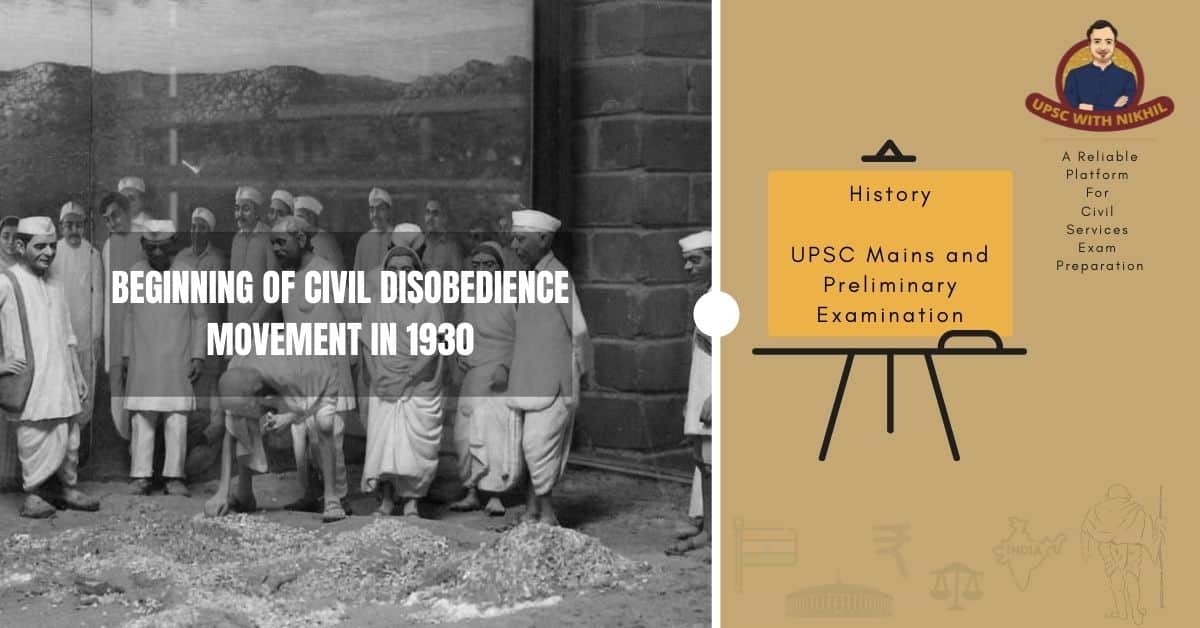Beginning Of Civil Disobedience Movement In 1930
Arrival of prince Wales: Wherever the Prince of Wales went, he was met with deserted streets and shuttered windows. Non-co-operators became more aggressive as a result of their successful defiance of the government. The Congress Volunteer Corps grew into a powerful parallel police force, and the sight of its members marching in formation and wearing uniform did not warm the hearts of the government.
PREPRATION OF CDM:
• The Congress had already given the PCCs permission to sanction mass civil disobedience wherever they thought the people were ready, and no-tax movements were already in the works in some areas, such as Midnapur district in Bengal, which had started a movement against Union Board Taxes, and Chirala-Pirala and Pedanandipadu taluqa in Guntur district of Andhra Pradesh.'
• Non-cooperation propaganda, carried on among others by Jawaharlal Nehru, helped to fan the already existing ferment in the Avadh area of Uttar Pradesh, where kisan sabhas and a kisan movement had been gathering strength since 1918, and it soon became difficult to distinguish between a non-cooperation meeting and a kisan meeting.'
• Non-cooperation and Khilafat propaganda helped to enrage Muslims tenants against their landlords in Malabar, Kerala, but the movement here, unfortunately, took on a communal hue.
• Tea plantation workers in Assam went on strike. When the fleeing workers were shot at, the steamer service and the Assam-Bengal Railway both went on strike. Bengali nationalist leader J.M. Sengupta played a key role in these developments. A Calcutta medical student led a cultivators' strike in Midnapur against a White zamindari company.
• In Andhra Pradesh, defiance of forest laws has become commonplace. In some Rajasthan states, peasants and tribal started movements to secure better living conditions. The Akali Movement for ‘Testing control of the gurudwaras from the corrupt mahants’ (priests) was a part of the general movement of non-cooperation in Punjab, and the Akalis observed strict non-violence in the face of enormous repression.

• The list could go on and on, but the point is that the spirit of unrest and defiance of authority engendered by the Non-Cooperation Movement contributed to the rise of numerous local movements in various parts of the country, movements that did not always adhere strictly to the Non-Cooperation Movement's programme or even to the nonviolence policy.
• In this situation, it's not surprising that the government came to the conclusion that its previous policy had failed and that the time had come to strike. The government had decided to leave the movement alone in September 1920, believing that repression would only make martyrs of the nationalists and fan the spirit of revolt.
• It attempted, through the Gandhi-Reading talks in May 1921, to persuade Gandhiji to ask the Ali brothers to remove passages from their speeches that suggested violence; this was an attempt to drive a wedge between the Khilafat leaders and Gandhiji, but it failed. By December, the government had decided that things had gone too far and had announced a policy change, declaring the Volunteer Corps illegal and arresting anyone who claimed to be a member.
• C.R. Das was one of the first to be apprehended, followed by his wife Basanti Debi, whose arrest enraged Bengal's youth so much that thousands came forward to be apprehended in court.
• Over 30,000 people were arrested across the country over the next two months, and only Gandhiji remained free of the top leadership.
• A failed attempt at negotiations was launched by Malaviya in mid-December, but the conditions offered required the sacrifice of the Khilafat leaders, which Gandhiji would not accept. In any case, the Home Government had already decided against a settlement and had instructed Lord Reading, the Viceroy, to withdraw from the talks.
• Public meetings and assemblies were prohibited, newspapers were censored, and midnight raids on Congress and Khilafat offices became commonplace.
• The Congress rank and file, as well as the leadership, had been pressuring Gandhiji to begin the phase of mass civil disobedience.
• In December 1921, at the Congress's Ahmedabad session, he was named the sole authority on the subject. The Government showed no signs of giving in, dismissing both the appeal of the All-Party Conference in mid-January 1922 and Gandhiji's letter to the Viceroy, in which he stated that unless the Government lifted the ban on civil liberties and released political prisoners, he would be forced to carry out mass civil disobedience.


